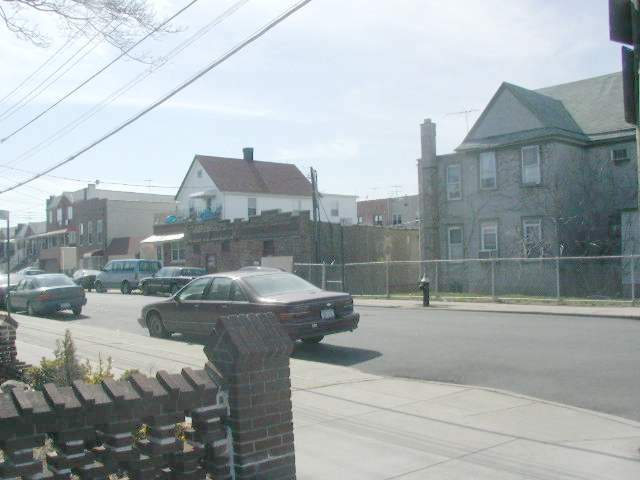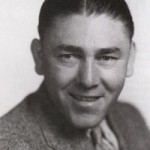Bath Beach, Brooklyn, is a pretty sleepy neighborhood. That’s not a knock–that’s just how its residents like it. In the mid-1920s, it was just about as sleepy, though at that time, it was well-positioned for a building boom. The West End elevated, completed a decade earlier, ran down 86th Street and Stillwell Avenue to Coney Island, then the nation’s playground. The economy was buzzing along, Silent Cal in the White House, the Babe in the Bronx and Beau James in City Hall. Life was a peach. At this time, Moses Horwitz decided to ditch his sometimes spotty stage career and jump into real estate.

Moses and Jerome Horwitz built these four houses at Bay 43rd and Bath Avenue in Bath Beach.
Moses’ mother Jennie ran Midwood Realty in Bensonhurst. With her help, he bought a plot of land for $1200 at Bath Avenue and Bay 43rd Street, which had only recently been cut through. With the help of his brother Jerome, and some friends from New Utrecht High School, they built four wood frame and brick homes on the block between Bath and Harway Avenue (which may have then been called Cropsey, but we’ll get to that). The most prominent was this three-story wood frame dwelling at Bath and Bay 43rd:


Moses married Helen Schonberger, a cousin of illusionist/daredevil Harry Houdini, in 1925. Soon enough, Helen got pregnant, but Moses wasn’t able to rent the homes and unfortunately, lost the $22,000 he had sunk into them. By 1927, he was down to his last $425. For a time, Moses tried to make a go of it selling distressed merchandise in the small, single-story brick factory he had built adjacent to the corner house, but that, too, fell through, and Moses had to return to an earlier profession.

Years later, Moe, after a modestly successful career in vaudeville, rejoined Healy and, with his brother Sam on board, they began a stage comedy act that continued for the next ten years. Frizz-haired concert violinist and amateur boxer Lawrence Fineberg (who called himself Larry Fine) joined the act in 1925. A down period in 1926 led Moe, with the help of another brother, Jerome, to build the four Bay 43rd Street buildings.
In the early 1930s, Sam Horwitz (his mother was always mispronouncing his name, making it sound like “Shemp”) decided to go off on his own, and so Healy and the boys needed a replacement. They found it in Moe’s brother Jerome, who had to be persuaded to cut off his wavy brown hair and mustache. His nickname, Curly, still stuck. Eventually, the three had enough confidence to leave Healy and sign a contract in 1934 with Columbia Pictures, where the act would remain for nearly thirty years as, of course, the Three Stooges.
And that, as Paul Harvey used to say, is the rest of the story.
As for Harway Avenue and Crospey Avenue, since we’re in the neighborhood, maps show that, in the mid-1920s, the two avenues mysteriously changed names.
By November 2003, the corner house on Bath and Bay 43rd had been torn down, to be replaced by these attached dwellings. A couple of the homes built by the Horwitzes can still be found on Bay 43rd.
Moe and Curly clown with parents Solomon and Jennie in the 30s
SOURCES:
C.J. Sullivan, “The Houses Built By The Stooges”, Brooklyn Bridge magazine, January 1999
4/7/2003, revised 2012